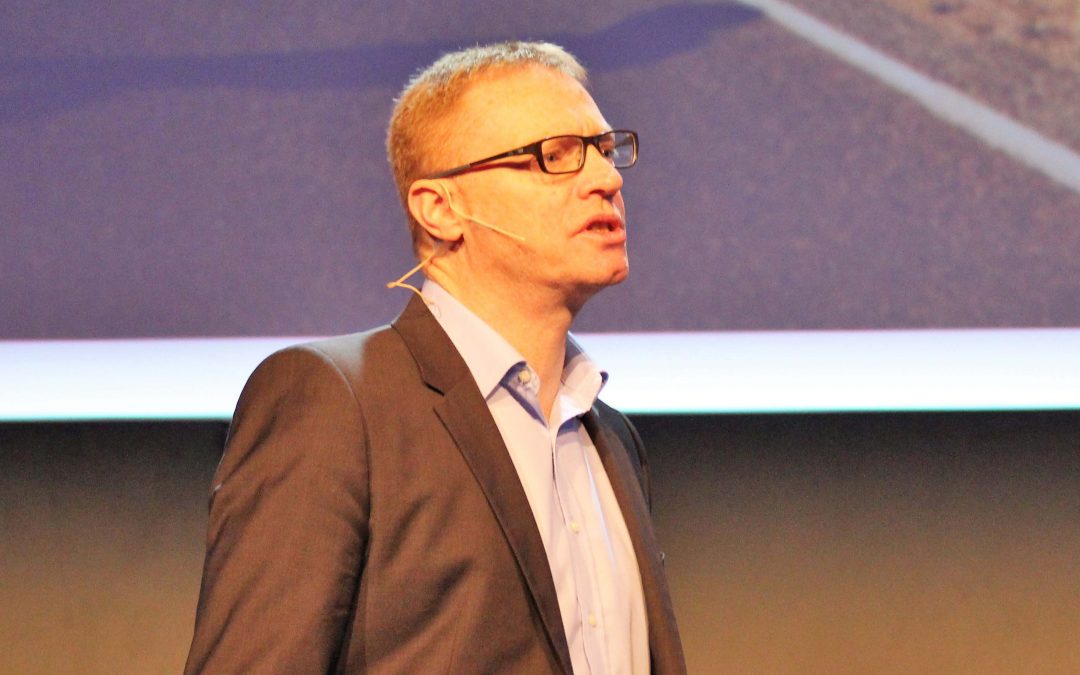Kathy Gibson at Dell EMC Forum, Sandton – The business transformation journey needs to embrace transformation in four areas: digital; IT; workforce; and security.
This is the word from Nigel Moulton, EMEA chief technology officer: converged platforms and solutions division at Dell EMC, who points out that IT is a fundamental investment that businesses make.
In the digital transformation arena, IT focus is moving from systems of record to systems of engagement, Moulton says.
“It is a competitive advantage because it is the thinking about how you deliver the systems of engagement.
“Business will provide incremental IT budget as it drives new streams of revenue.”
Importantly, software DNA is becoming critical in the digital transformation journey.
The iterative model of development that will transform the business is about embedding software functions into hardware systems and pushing them out, expecting people to engage with them.
This process goes on all the time: as companies learn from a system, they can change it and push it out again.
“When you embed software into this, and put devices into the hands of people that go from thousands to tens of thousands to millions, you can’t think linearly,” Moulton explains.
“These processes are geometric – not linear. So you have to apply geometric thinking.”
The traditional way off thinking about the technology adoption lifecycle as a smooth curve is often wrong, Moulton points out.
“Some technologies never make it across the chasm, into the mainstream,” he says.
Technologies that have recently crossed the chasm include flash storage and hyperconvergence. Artificial intelligence (AI) and machine learning are most likely there as well, says Moulton.
The next phase is typically the tornado phase, where a huge amount of activity takes place.
Blockchain, he believes, is almost across the chasm – and other new technologies like AI and machine learning will be critical in its success.
“So what are we doing about it?” Moulton asks. “We are realising that we need a new set of architectures to deal with it.”
For instance, Internet of Things (IoT) is driving the need for a new cloud-native architecture.
“We will adopt IoT because it can better our lives. It will touch everything, and there will be billions of them.”
IoT devices will gather data and report on things.
“There will be a distributed approach to this – so we have to have a different architecture. Those invested in container services and microservices and others know these are central to IoT.”
As the IoT becomes more intelligent, transactions will take place within the network – and blockchain will enable this, Moulton says. “When a thing needs to trust another ting, you can’t put people in the way. The blockchain provides the basis for how that will happen.”
This will require a new distributed core, that can help to drive geometric thinking rather than traditional linear thinking.
Pivotal Labs provides a new cloud-native application platform based on the Pivotal Cloud Foundry that brings together applications, containers, data and functions.
“Cloud Foundry is an open source piece of work,” Moulton points out.
In a software-defined world, hardware vendors still have a place, according to Moulton and verified by independent research by IDC.
CIOs plan to invest mostly in security, but then in infrastructure.
:This is what will power the world we envisage,” Moulton says. “There are things you can’t do in a public space; and we are seeing a move to the hybrid space.
When it comes to IT transformation, hybrid cloud is becoming mainstream.
Companies are looking to modernise their data centres, automat their process, and transform their operations.
“When you combine these things together, it has a dramatic effect on IT,” Moulton says.
Dell EMC underpins these trends with its technologies, including flash storage, scale-out architecture, software-defined data centres, and cloud-enabled services, also provided by a trusted supplier.
“We have point of view is that the best way to acquire technology is to acquire it as an outcome,” Moulton adds.
The company’s converged and hyperconverged infrastructure is the fastest way to modernise, he says.
Aiming to bridge the on-premise and cloud worlds, Dell EMC has developed a multi-cloud strategy. “It’s important to build repeatable standards in your infrastructure, Moulton says.
“This will significantly lower running costs. When you create a repeatable standard, you let Day Two and Day Three operations run differently. Your engineering teams don’t have to worry about those things because we worry about them for you.”
A reliable and consistent approach to building, managing and utilising infrastructure is going to become more important as businesses gets more geometric, Moulton says.
Dell EMC works with Pivotal to provide a consistent application platform, and with VMware on consistent infrastructure operations.
“We are making investments in these businesses to drive a consistent outcome,” Moulton explains.
Workforce transformation is critical in a world where the way we work and how we work is changing.
Currently, IT is measured on cost as opposed to experience. “So we understand the dynamics, but sometimes we think about it the wrong way.”
So IT has to balance user productivity with cost, Moulton says.
He says Dell EMC delivers award-winning PCs designed for productivity and security. On the other hand, they are the most manageable devices, with 25% savings on PC lifecycle management.
Security transformation is the final leg of the transformation journey.
Security has to run across all parts of the system, Moulton says.
In fact, security needs to be built into all parts of the infrastructure.
Dell and VMware are embedded into clients and devices; VMware helps to secure the network from the ground up; VMware and Dell EMC can be embedded into the server; and Dell EMC puts security into the storage fabric.

